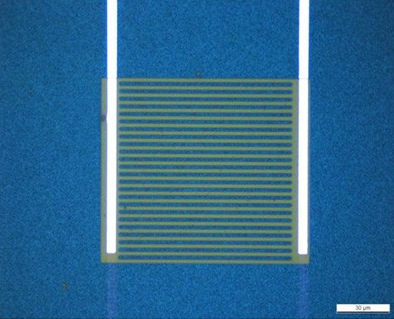nanowire
Nanowires, nanowires (NW), are basic elements of nanoelectronics. They are ultrathin conductors with diameters in the nanometer range of up to 100 nm. They are typically made of germanium, silicon, indium phosphide( InP), gallium nitride or other semiconductors, but can also be made of metallic materials such as nickel( Ni), platinum (Pt) or other materials.
Nanowires can be used as basic elements for scalable nanoelectronics. For example, for interconnecting tiny components in extremely small circuits or for developing active nanocomponents, as demonstrated by the development of a nanowire transistor. This example clearly shows the advantages of nanoelectronics. In contrast to the conventional transistor, the nanowire transistor is constructed vertically, which allows a much more compact design. Furthermore, this technology offers lower power consumption and higher switching frequencies.

